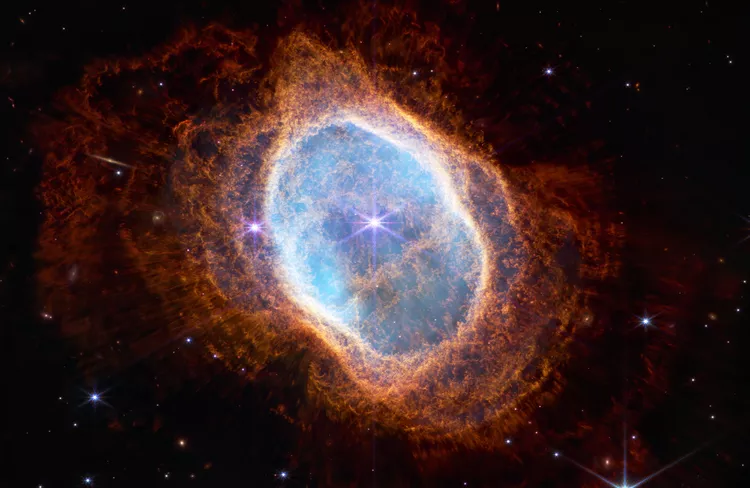1. NASA’s Astonishing Webb Images
2. A Closer Look at the Universe
3. The Potential of the James Webb Telescope
NASA has released the first images taken by the James Webb Space Telescope, a $5 billion project more than two decades in the making — and they’re absolutely breathtaking.
Released on Monday by President Biden, the first image is the deepest infrared image of space ever taken. It depicts galaxy cluster SMACS 0723, located 4.6 billion light-years away, behind which are dozens of ancient galaxies more than 13 billion light-years away. “This slice of the vast universe covers a patch of sky approximately the size of a grain of sand held at arm’s length by someone on the ground,” wrote NASA in a press release.
Today, NASA revealed four more images. The first is an “indirect” image — a graph showing the atmospheric composition of exoplanet WASP-96 b, taken by Webb’s spectrograph, which indicates the presence of water. Moreover, the other three are all direct images. One shows the Southern Ring Nebula, where planets are born in clouds of dust and gas emitted from dying stars, while another captures a group of colliding galaxies called Stephan’s Quintet (as referenced in the film It’s a Wonderful Life).
The final photo, however, is perhaps the most jaw-dropping. Webb captured the Carina Nebula, a cloud of dust and gas in which stars are born, in such detail that the image almost looks three-dimensional. Consequently, because the telescope observes infrared light, it’s able to peek inside the cloud to “see” the stars within — those stars are not visible in previous photos of the Carina Nebula taken in the visible-light spectrum.
:max_bytes(150000):strip_icc():format(webp)/james-webb-space-WEBB0722-029c6c2bb1974d6a9f777403b4266af4.jpg)
Webb is the largest and most powerful telescope ever built, designed to observe both nearby celestial objects and the farthest reaches of our universe with its high-resolution infrared cameras. Development on the project began in 1996, but the telescope wasn’t launched until Christmas Day in 2021.
After launch, Webb spent about a month traveling to its home in space, a point known as L2, located nearly a million miles away from Earth. Since then, it has been calibrating its instruments to prepare for its primary purpose: imaging space in a level of detail we haven’t achieved before.
With the release of these images, it’s time for the telescope to start its formal operations — the first pictures are just the beginning. Now it’s time for scientists to use Webb to deepen our understanding of the cosmos.
Scientists around the world will have the chance to use Webb for their research. The telescope will capture images of some of the oldest parts of our universe, stars, and galaxies some 13.5 billion years old, as well as peer into the mysterious clouds of dust that serve as the birthplaces of stars. It will also examine planets in our solar system and exoplanets beyond, determining their compositions and searching for the building blocks of life.
To keep up with the latest Webb developments, you can follow the updates here.




